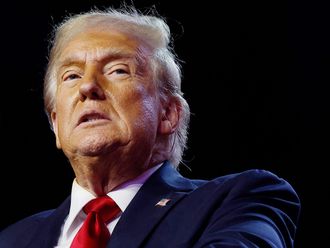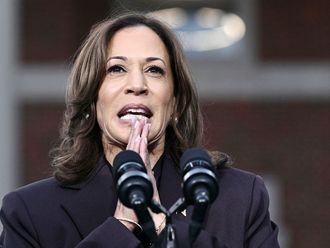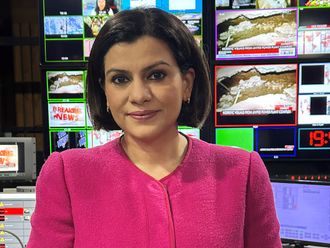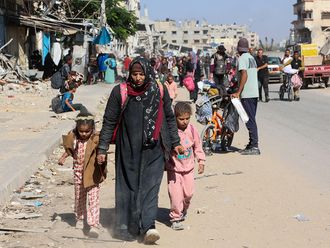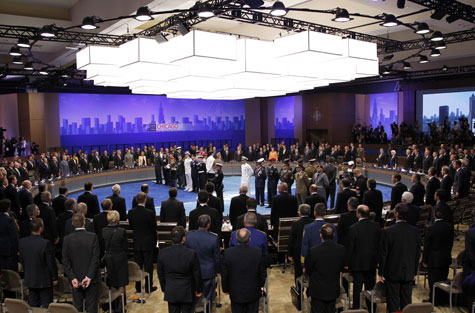
On Sunday and yesterday, Nato's 28 members met in Chicago for their annual summit. Sixty-two years after the North Atlantic Treaty was signed, binding the US, Canada, and 10 European states to consider an attack on one an attack on all, Nato is transforming itself into a 21st century global security organisation. The result will be a safer world.
In 1949, the world was rapidly dividing into two principle political-military blocs, East and West, alongside a large ‘non-aligned movement'. Nato faced off against the Warsaw Pact, created by the Soviet Union and its allies in 1955. Within both blocs, smaller powers clustered around the superpower. No flexibility existed within either bloc for smaller groups of members to deploy alliance assets.
Today, Nato is becoming, in the words of its secretary-general, Anders Fogh Rasmussen, "a hub of a network of security partnerships and a centre for consultation on global security issues". It is a "globally connected institution," with more than 40 individual country partners and growing ties to other international organisations.
Indeed, the country partners include all of Europe's non-Nato countries, such as Austria, Switzerland, Finland, and Sweden, and aspiring and possible Nato members such as Bosnia, Serbia, Macedonia, Ukraine, Belarus, and even Russia. Virtually all of the Central Asian countries — from Turkmenistan to Kazakhstan, as well as Armenia, Azerbaijan, Afghanistan, and Pakistan — are partners, as is the entire Maghreb, from Morocco to Egypt, as well as Israel, Jordan, Iraq, Bahrain, Qatar, Kuwait, and the UAE.
Finally, Pacific partners include Japan, South Korea, Australia, New Zealand, and Mongolia.
Working relations
On the organisational side, Nato describes itself as having developed "close working relations" with the United Nations, the European Union, and the Organisation for Security and Cooperation in Europe.
If one draws links radiating outward from Nato to all of these different countries and organisations, the result is a security network that has multiple hubs and clusters — much like a map of the internet or of planets and galaxies. This world is no longer unipolar, bipolar, or even multipolar, because the actors that matter are not single states, but groups of states that are more or less densely connected. It is a multi-hub security network, in which the hubs are regional organisations of different sizes and strengths.
This structural shift has enormous practical significance. For starters, it means that not only Nato's military resources, but also its human capital and practical knowledge in combating many different kinds of threats are available globally.
Nato has created a Comprehensive Crisis and Operations Management Centre that brings together civilian and military expertise on crisis identification, planning, operations, reconstruction, and stabilisation capabilities in ways that are explicitly designed to connect Nato headquarters in Europe to "the networked world".
Second, Nato's own identity is becoming that of an alliance that exists to empower — to offer assistance and partnership — as much as to overpower. Nato is no longer just a hammer; it is an entire toolbox of security options. These options include developing counter-networks to meet networked security threats such as terrorism as well as highly decentralised threats such as piracy.
Security options
As a result, when a crisis like the war in East Timor in 1999 or last year's political stalemate in the Ivory Coast arises, Nato can backstop whichever country or group of countries chooses to take the lead in carrying out a UN mandate.
Nato members themselves also have much more flexibility to draw on Nato's collective assets. Even sceptics of Nato expansion and operations like the intervention in Libya now recognise that joint operations by member countries, operating under a UN mandate and in conjunction with regional partners, is likely to be a model for the future.
Power in a network flows from connectedness, or what network theorists call ‘centrality'. The most powerful member of a network is the node that has the most connections to others, which means that a node can increase its power not only by adding connections directly, but also by increasing the connectedness of nearby nodes.
In other words, the US can increase its own power both by connecting to other Nato members and by increasing the connectedness of those other countries and organisations.
The logic of centrality as a source of power creates a virtuous circle, in which members of a network gain advantage by bringing more members into the network and connecting more densely to them. That is exactly the logic behind Nato's transformation.
The topic on the agenda in Chicago was getting Nato forces out of Afghanistan. But the longer-term subject will be getting as many countries as possible into the global Nato security network.
— Project Syndicate, 2012
Anne-Marie Slaughter, a former director of policy planning in the US State Department, is professor of Politics and International Affairs at Princeton University.


